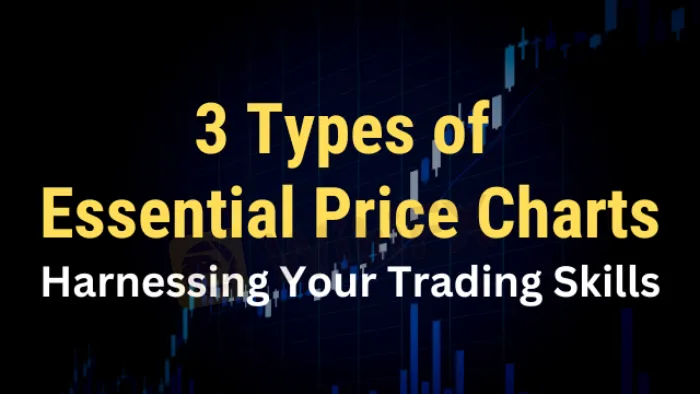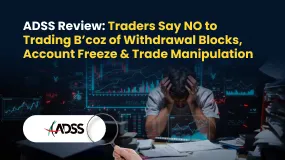简体中文
繁體中文
English
Pусский
日本語
ภาษาไทย
Tiếng Việt
Bahasa Indonesia
Español
हिन्दी
Filippiiniläinen
Français
Deutsch
Português
Türkçe
한국어
العربية
3 Types of Essential Price Charts: Harnessing Your Trading Skills
Abstract:Discover the Power of Price Charts: Learn to Analyze Market Trends and Improve Your Trading Skills with Line, Bar, and Candlestick Charts.

Navigating the trading world can be overwhelming, but understanding price charts is crucial for success. These charts, which map out price actions over time, are invaluable for analyzing market trends and making informed decisions. We'll explore the three primary types of price charts - line charts, bar charts, and candlestick charts - to help traders of all levels harness their full potential.
Line Charts: The Foundation of Market Analysis

Line charts are the simplest form of price charts, connecting closing prices over time to form a single line. They're ideal for beginners due to their simplicity and offer several benefits:
Easy Interpretation: With their straightforward presentation, line charts are user-friendly, making them perfect for newcomers.
Long-Term Trend Analysis: These charts provide a clear overview of how prices have trended over time, essential for understanding broader market movements.
Identifying Support and Resistance: Line charts help spot crucial price levels, guiding traders in predicting future market movements.
However, they have limitations. Line charts only show closing prices, missing out on the full spectrum of price action like opening, high, and low prices within a trading period.
Bar Charts: A Step-Up in Market Detail

Bar charts provide more detail than line charts. Each bar represents a specific period (like a day or week) and shows the opening, high, low, and closing prices. The benefits of bar charts include:
In-Depth Price Range Analysis: They reveal the full extent of price movements within a period, offering insights into market dynamics.
Market Sentiment Indicators: The length and color of the bars (usually green for rises and red for falls) quickly convey market trends and sentiment.
Volatility Assessment: The height of the bars indicates price fluctuation, highlighting periods of high market volatility.
The downside of bar charts is their potential complexity. They can become cluttered and challenging to read, especially when depicting shorter timeframes.
Candlestick Charts: The Ultimate Tool for Price Action Analysis
Candlestick charts are the most detailed type of price chart. Each 'candlestick' shows a time period's opening, closing, high, and low prices. The color and size of the candlestick body (filled or hollow) represent market trends and volatility. Candlestick charts are advantageous for:
Detailed Market Analysis: Offering intricate details of market movements, they reveal shifts in momentum and investor sentiment.
Identifying Trading Signals: Specific candlestick patterns can indicate buying or selling opportunities.
Understanding Market Forces: The shapes and colors of candlesticks provide insight into the balance of buying and selling pressure.
However, the complexity of candlestick charts can be overwhelming for beginners and require dedicated study to interpret accurately.
Choosing the Right Chart

The selection of a price chart depends on the trader's style, experience level, and what they find most informative. Beginners might lean towards line charts for their simplicity, while experienced traders may prefer the detailed analysis provided by candlestick charts.
Tips for Effective Use of Price Charts
Align Charts with Your Strategy: Choose a chart type that fits your trading approach and objectives.
Learn Chart Components: Get familiar with the elements of each chart type.
Spot Trends and Key Levels: Recognize important trend lines, support, and resistance levels.
Master Candlestick Patterns: Develop an understanding of common candlestick formations.
Use Technical Indicators: Enhance analysis with tools like moving averages, RSI, and MACD.
Backtest Strategies: Test your trading methods against historical data.
Continuous Learning: Stay updated with new analysis techniques and market trends.
Regular Practice: Consistently analyze charts to improve skill and confidence.
Conclusion: Mastering Price Charts for Trading Success
Price charts are fundamental tools in trading, offering deep insights into market dynamics and aiding in informed decision-making. While not foolproof, when combined with strong analytical skills, continuous education, and a solid trading plan, they can significantly improve trading performance. The best chart type is the one that aligns with your individual trading style, experience level, and analytical preferences. By mastering price charts, traders can navigate the complex market landscape with greater confidence and efficacy.

Disclaimer:
The views in this article only represent the author's personal views, and do not constitute investment advice on this platform. This platform does not guarantee the accuracy, completeness and timeliness of the information in the article, and will not be liable for any loss caused by the use of or reliance on the information in the article.
Read more

Grand Capital Doesn’t Feel GRAND for Traders with Withdrawal Denials & Long Processing Times
The trading environment does not seem that rosy for traders at Grand Capital, a Seychelles-based forex broker. Traders’ requests for withdrawals are alleged to be in the review process for months, making them frustrated and helpless. Despite meeting the guidelines, traders find it hard to withdraw funds, as suggested by their complaints online. What’s also troubling traders are long processing times concerning Grand Capital withdrawals. In this Grand Capital review segment, we have shared some complaints for you to look at. Read on!

ADSS Review: Traders Say NO to Trading B’coz of Withdrawal Blocks, Account Freeze & Trade Issues
Does ADSS give you plenty of excuses to deny you access to withdrawals? Is your withdrawal request pending for months or years? Do you witness account freezes from the United Arab Emirates-based forex broker? Do you struggle to open and close your forex positions on the ADSS app? Does the customer support service fail to respond to your trading queries? All these issues have become a rage online. In this ADSS Broker review article, we have highlighted actual trader wordings on these issues. Keep reading!

INGOT Brokers Regulation 2025: ASIC vs Offshore License - What Traders Must Know
Explore INGOT Brokers regulation in 2025: Compare their ASIC and Seychelles FSA licenses, understand trader protection levels, and learn about potential risks in this detailed guide.

INGOT Brokers Review 2025: High Risk or Hidden Gem? Expert Analysis Reveals All
Comprehensive INGOT Brokers review exploring the broker's mixed reputation in 2025. Discover the truth about regulation, trading options, and user experiences before opening an account.
WikiFX Broker
Latest News
Consob Targets Political Deepfake “Clone Sites” and Unlicensed Platforms in Latest Enforcement Round
WikiEXPO Global Expert Interviews: Gustavo Antonio Montero: ESG in Finance
2 Malaysians Arrested in $1 Million Gold Scam Impersonating Singapore Officials
Is FXPesa Regulated? Real User Reviews & Regulation Check
Fraud Mastermind Zhimin Qian Sentenced to 11 Years for $6.6 Billion Bitcoin Ponzi Scheme
Almahfaza Broker – 2025 Review: Safe or Scam?
Uniglobe Markets Review 2025: A Complete Guide to an Unregulated Broker
INZO Broker No Deposit Bonus: A 2025 Deep Dive into Its Offers and Risks
Exness Broker Expands in South Africa with Cape Town Hub
Global Guide to Finding Forex IBs/Brokers — Share Your Pick and Win Big!
Currency Calculator



